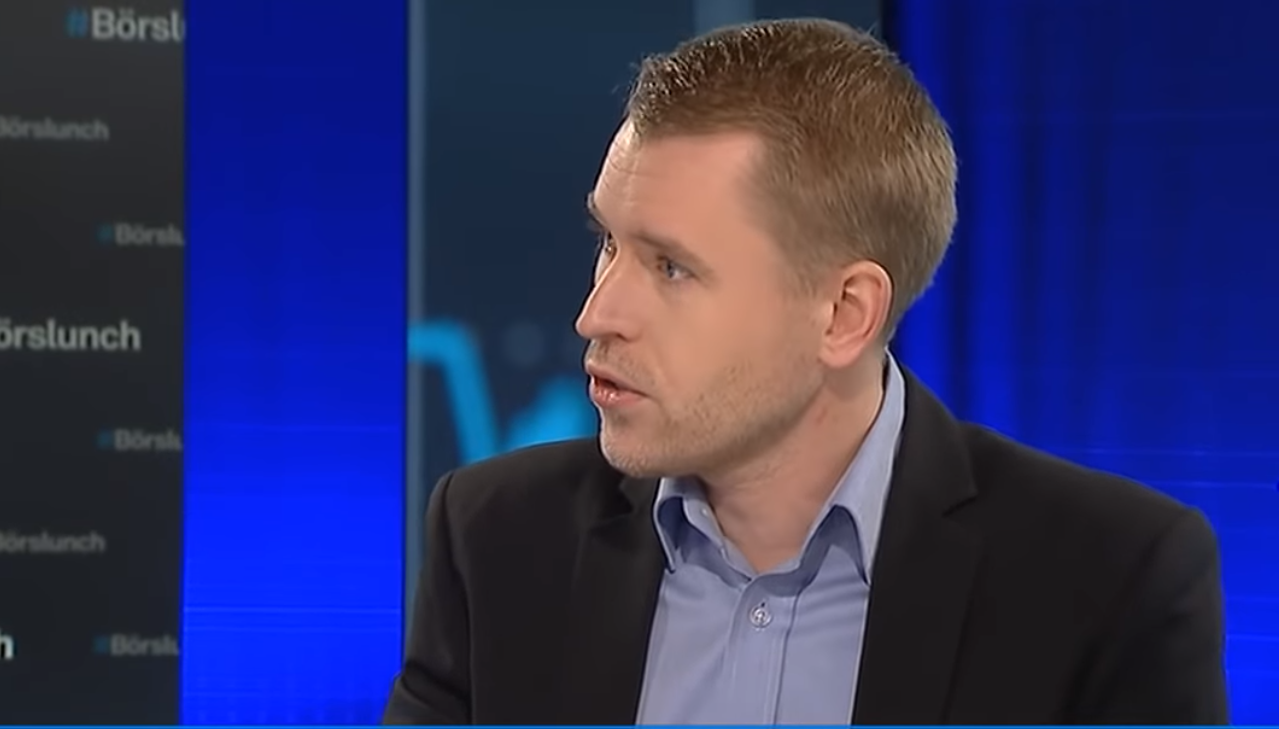Analys från DailyFX
Gold Prices Aren’t Buying the Fed’s Rate Hike Plans
To receive James Stanley’s Analysis directly via email, please sign up here.
- Gold Technical Strategy: Intermediate-term mixed; Near-term aggressively bearish.
- Gold prices set a new high two days ago, but have promptly reversed to break below prior swing-low support.
- If you’re looking for trading ideas, check out our Trading Guides. They’re free and updated for Q1, 2017. If you’re looking for ideas more short-term in nature, please check out our Speculative Sentiment Index Indicator (SSI).
Gold prices have been on a veritable rollercoaster over the past three months. After a dramatic drop on the night of the Presidential election in November, Gold prices continued running-lower in the month after. But ever since the Federal Reserve hiked rates in mid-December, price action in Gold has been aggressively bullish; retracing a large chunk of that prior down-trend as buyers have continued to push prices-higher. But more recently, that bullish-move has begun to show signs of slowing or even breaking-down; with the potential for a return of the bearish price action that dominated Gold markets for much of the second half of last year. On the daily chart below, we’re looking at the recent trends in Gold prices, with emphasis on this most recent-bump higher after a support bounce right around the December rate hike.

Chart prepared by James Stanley
On the hourly chart below, we focus-in on the more recent bullish move that’s developed after the FOMC rate hike in December, with the inclusion of this week’s price action after FOMC.
Chart prepared by James Stanley
This divergence between Gold prices and the Federal Reserve’s rate hike plans is very familiar to the price action that was seen in the first half of last year, when the Fed persisted that they were looking to hike rates multiple times in the year (first looking for four hikes, then three, and then two until, finally, we got one in December). Markets didn’t buy that, and, of course, it didn’t happen, as Gold prices spent most of the first part of 2016 rallying-higher.
But it was around the Jackson Hole Economic Symposium that this theme began to shift, as a trio of Fed speakers allayed their rate hike plans, again, and markets began to listen. This slowly helped to build support in the U.S. Dollar leading into the Presidential election, at which point everything spiked on the evening of November 8th, leading to the development of the predominant trends that are still hanging-on in many markets. The U.S. Dollar continued to stage a near-historic run as we moved into the December Fed meeting; and when the bank hiked rates while saying that they were looking for a full three hikes in 2016, the Dollar began to surge again.
But what didn’t show back-up was the down-trend in Gold. Gold prices began to run-higher after that rate hike, and save for a 38.2% retracement of the bullish move in mid-January (shown above), price action has continued to show bullish posture. Of particular note to the continued development of that bullish posture is a current zone of resistance between the $1,215-$1,220 levels. Price action has made numerous attempts to overtake this confluent zone of resistance, with sellers responding in each instance. For those looking at top-side strategies, they’d likely want this long-term zone of resistance to become resolved with higher-prices before pushing bullish approaches. Conversely, a test of prior support levels at or around $1,204.76 or $1,200 could open the door to approaches utilizing $1,215.17-$1,220 as a quick top-side target.

Chart prepared by James Stanley
On the bearish side of Gold prices, we’re likely going to need some type of catalyst to kick-off the bearish price action. Last year, this was persistent Fed speak as we moved into the elections and then the Fed’s December meeting. But the next Fed meeting isn’t until mid-March, and there is scant expectation for a hike there. So, bearish approaches should remain cautious until some indication of reversal of this bullish move begins to show.
— Written by James Stanley, Strategist for DailyFX.com
To receive James Stanley’s analysis directly via email, please SIGN UP HERE
Contact and follow James on Twitter: @JStanleyFX
Analys från DailyFX
EURUSD Weekly Technical Analysis: New Month, More Weakness
What’s inside:
- EURUSD broke the ‘neckline’ of a bearish ‘head-and-shoulders’ pattern, April trend-line
- Resistance in vicinity of 11825/80 likely to keep a lid on further strength
- Targeting the low to mid-11600s with more selling
Confidence is essential to successful trading, see this new guide – ’Building Confidence in Trading’.
Coming into last week we pointed out the likelihood of finally seeing a resolution of the range EURUSD had been stuck in for the past few weeks, and one of the outcomes we made note of as a possibility was for the triggering of a ’head-and-shoulders’ pattern. Indeed, we saw a break of the ’neckline’ along with a drop below the April trend-line. This led to decent selling before a minor bounce took shape during the latter part of last week.
Looking ahead to next week the euro is set up for further losses as the path of least resistance has turned lower. Looking to a capper on any further strength there is resistance in the 11825-11880 area (old support becomes new resistance). As long as the euro stays below this area a downward bias will remain firmly intact.
Looking lower towards support eyes will be on the August low at 11662 and the 2016 high of 11616, of which the latter just happens to align almost precisely with the measured move target of the ‘head-and-shoulders’ pattern (determined by subtracting the height of the pattern from the neckline).
Bottom line: Shorts look set to have the upperhand as a fresh month gets underway as long as the euro remains capped by resistance. On weakness, we’ll be watching how the euro responds to a drop into support levels.
For a longer-term outlook on EURUSD, check out the just released Q4 Forecast.
EURUSD: Daily
—Written by Paul Robinson, Market Analyst
You can receive Paul’s analysis directly via email bysigning up here.
You can follow Paul on Twitter at@PaulRobinonFX.
Analys från DailyFX
Euro Bias Mixed Heading into October, Q4’17

Why and how do we use IG Client Sentiment in trading? See our guide and real-time data.
EURUSD: Retail trader data shows 37.3% of traders are net-long with the ratio of traders short to long at 1.68 to 1. In fact, traders have remained net-short since Apr 18 when EURUSD traded near 1.07831; price has moved 9.6% higher since then. The number of traders net-long is 15.4% lower than yesterday and 16.4% higher from last week, while the number of traders net-short is 0.4% higher than yesterday and 10.5% lower from last week.
We typically take a contrarian view to crowd sentiment, and the fact traders are net-short suggests EURUSD prices may continue to rise. Positioning is more net-short than yesterday but less net-short from last week. The combination of current sentiment and recent changes gives us a further mixed EURUSD trading bias.
— Written by Christopher Vecchio, CFA, Senior Currency Strategist
To contact Christopher Vecchio, e-mail cvecchio@dailyfx.com
Follow him on Twitter at @CVecchioFX
To be added to Christopher’s e-mail distribution list, please fill out this form
Analys från DailyFX
British Pound Reversal Potential Persists Heading into New Quarter

Why and how do we use IG Client Sentiment in trading? See our guide and real-time data.
GBPUSD: Retail trader data shows 38.2% of traders are net-long with the ratio of traders short to long at 1.62 to 1. In fact, traders have remained net-short since Sep 05 when GBPUSD traded near 1.29615; price has moved 3.4% higher since then. The number of traders net-long is 0.1% higher than yesterday and 13.4% higher from last week, while the number of traders net-short is 10.6% lower than yesterday and 18.3% lower from last week.
We typically take a contrarian view to crowd sentiment, and the fact traders are net-short suggests GBPUSD prices may continue to rise. Yet traders are less net-short than yesterday and compared with last week. Recent changes in sentiment warn that the current GBPUSD price trend may soon reverse lower despite the fact traders remain net-short.
— Written by Christopher Vecchio, CFA, Senior Currency Strategist
To contact Christopher Vecchio, e-mail cvecchio@dailyfx.com
Follow him on Twitter at @CVecchioFX
To be added to Christopher’s e-mail distribution list, please fill out this form
-
Analys från DailyFX10 år ago
EUR/USD Flirts with Monthly Close Under 30 Year Trendline
-

 Marknadsnyheter2 år ago
Marknadsnyheter2 år agoUpptäck de bästa verktygen för att analysera Bitcoin!
-
Marknadsnyheter5 år ago
BrainCool AB (publ): erhåller bidrag (grant) om 0,9 MSEK från Vinnova för bolagets projekt inom behandling av covid-19 patienter med hög feber
-
Analys från DailyFX12 år ago
Japanese Yen Breakout or Fakeout? ZAR/JPY May Provide the Answer
-

 Marknadsnyheter2 år ago
Marknadsnyheter2 år agoDärför föredrar svenska spelare att spela via mobiltelefonen
-
Analys från DailyFX12 år ago
Price & Time: Key Levels to Watch in the Aftermath of NFP
-
Analys från DailyFX8 år ago
Gold Prices Falter at Resistance: Is the Bullish Run Finished?
-

 Nyheter7 år ago
Nyheter7 år agoTeknisk analys med Martin Hallström och Nils Brobacke











